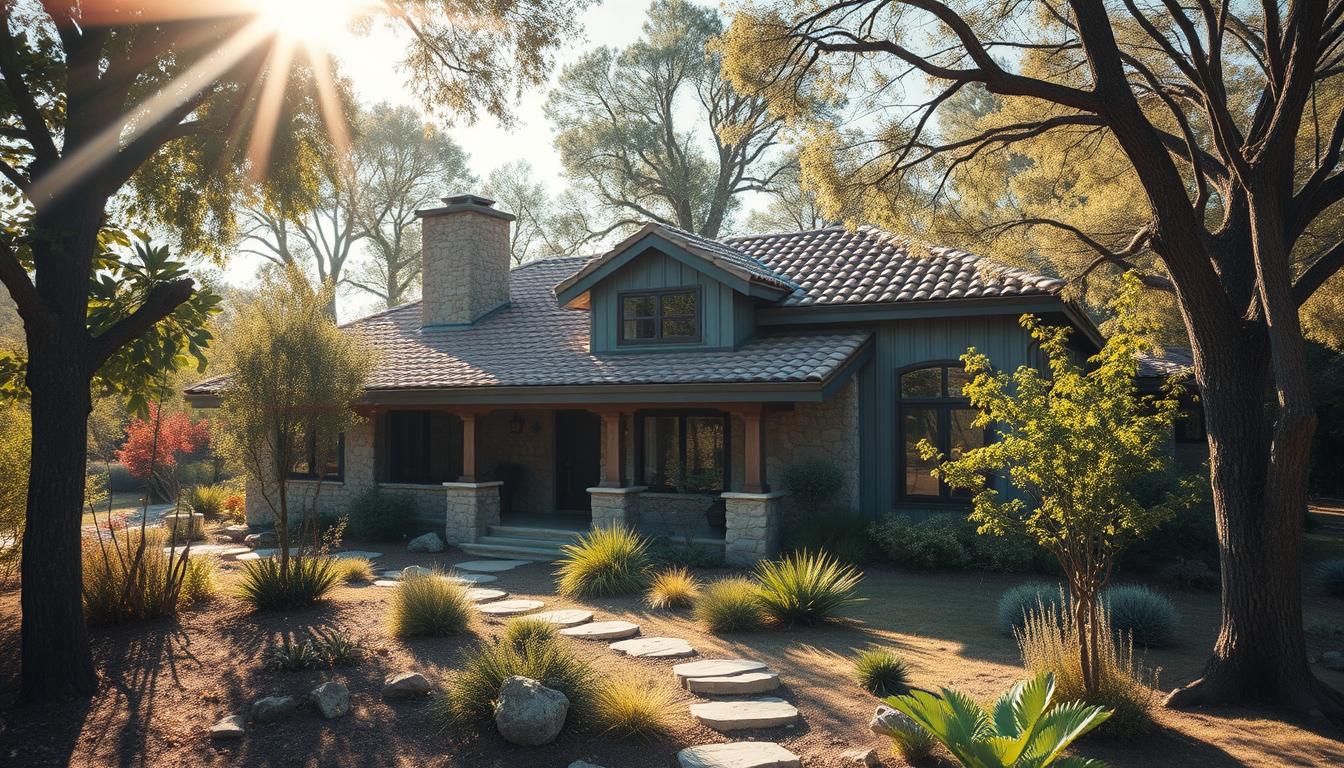Ever wondered how to protect your home from fires without spending too much? Recent wildfires in Los Angeles have shown us how crucial it is. At least five lives were lost, and nearly 2,000 homes were destroyed.
Taub, from House, taught us to pack a lot into a short time. This mindset helps us build a safe home. Start by using fire-resistant materials or adding safety features. Some people choose fireproof insulation or budget-friendly techniques. Even energy upgrades can help, as shown in this article.
Key Takeaways
- Building confidence begins with fire-resistant building materials.
- Budget-friendly methods exist for how to build a fireproof home.
- Effective planning and home fire safety features reduce risks.
- Fireproof insulation options help guard against intense heat.
- Adopting targeted fireproofing techniques brings extra peace of mind.
Understanding Fireproof Construction Basics
In wildfire-prone areas, strict building codes for fireproof homes are enforced. This helps reduce the risk of structures catching fire and keeps communities safe. A flame-retardant home design uses strong materials and layouts that limit fire spread.
Fire-resistant landscaping is also key. It creates space around homes to stop flames from reaching dangerous areas. Materials like reinforced concrete and steel frames are used for their durability.
Gypsum board adds extra protection when used in layers. Homeowners building a fireproof house follow government-approved guidelines. Sealed windows and doors prevent embers from getting in, and ventilation upgrades reduce smoke.
Using fire resistant construction techniques helps protect a forest fire proof house from fires. Materials like mineral wool insulation and double-glazing windows provide extra barriers against heat. Here’s a quick look at how different materials perform under high temperatures.
Steel structures can melt at temperatures over 1400°C. Concrete columns may last longer, but intense flames can still damage them if not well-insulated. Gypsum wallboard slows fire spread, giving people more time to leave.
Local codes often recommend metal panel doors with fusible closures in areas with wind-driven embers. Wildfire research shows that unprotected beams can buckle quickly, leading to collapse.
Some designs use mineral wool insulation, which can withstand up to 1220°C. Others use fiberglass batts for moderate fire protection. Every detail, from door seals to attic vents, is crucial when flames are near.
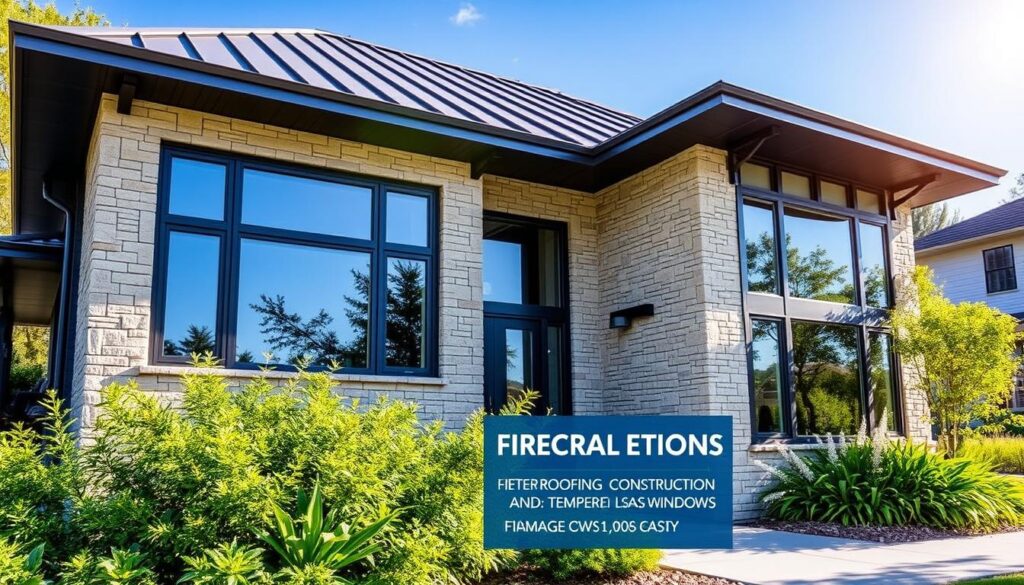
| Material | Max Temp | Key Benefit |
|---|---|---|
| Concrete | 1000°C | Holds strength for 60 min |
| Steel | 600°C | Resists moderate heat |
Essential Fire-Resistant Building Materials
Many people want to protect their homes from fires. Homes with alarms can cut down fire deaths by 55%. A wall rated for one hour can keep flames back, giving families time to get out.
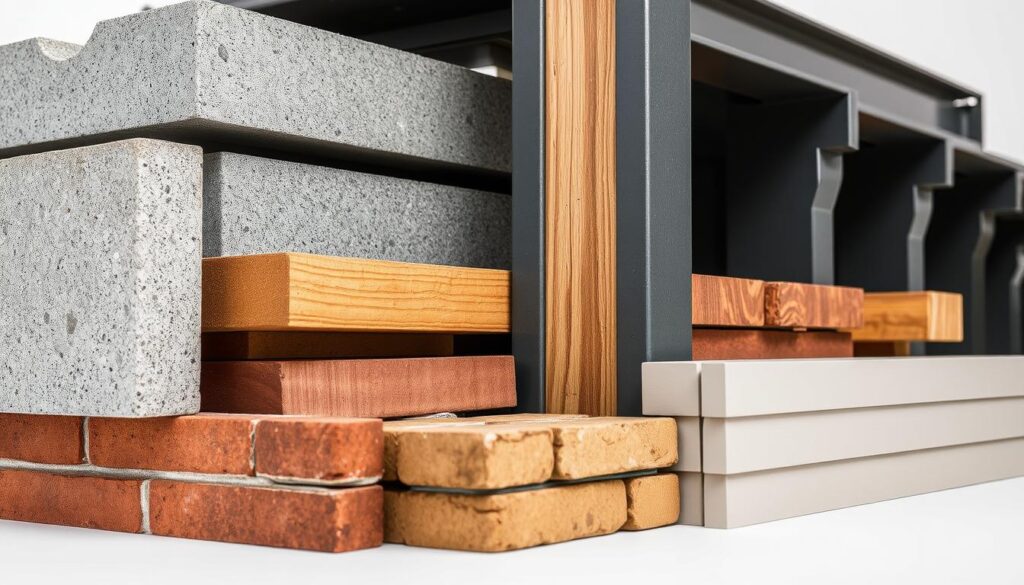
Building a fire-resistant house can lower insurance costs in fire-prone areas. The right materials are key for a fire-safe home. Exterior walls without protection can spread flames.
Fireproofing starts with choosing roof, wall, and siding that won’t catch fire.
Fireproof Roofing Options
Metal roofing and concrete tiles block embers from wildfires. Class A fire-rated shingles pass tough burn tests. These options help roofs resist heat and last longer.
Non-Combustible Wall Systems
Concrete blocks, ICFs, and AAC boost protection. Noncombustible walls stop flames from spreading inside. They keep structures safe for hours if embers hit the home.
Durable Fire-Resistant Siding Choices
Fiber cement panels, stucco, and brick are very fire-resistant. They create a strong outer layer for fire-safe homes. Reflective coatings add extra defense against embers.
Site Preparation for a Defense Against Wildfires
Many homes face serious risks when wildfires strike, as reported by CNN’s coverage. Brush and dry vegetation act as quick fuel, so clearing them is a top priority. A fire resistant home requires ample space between flammable plants and walls. This idea benefits anyone learning how to build a fireproof house, since embers travel vast distances before landing.
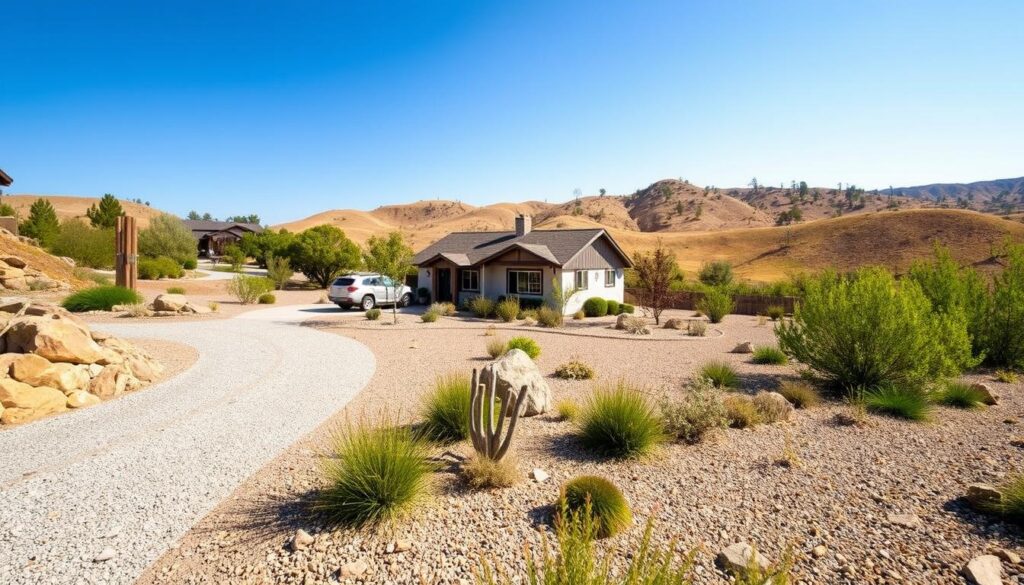
Steps for a fire-resistant home often include trimming tree branches to 15 feet high and spacing plants 15 feet apart. This practice aligns with fire proof construction standards that recommend removing ladder fuels. Creating a buffer around structures leads to a fire safe building that is less likely to ignite. Spark arresters on flues, mesh coverings for attic vents, and safe storage of combustibles also reinforce fireproofing home efforts.
- Maintain at least two exit routes to support quick evacuations
- Keep driveways at least 16 feet wide for emergency vehicles
- Use approved containers for gasoline and place them away from living areas
- Remove low-hanging limbs near chimneys to prevent direct flame contact
A defensible space of 30 feet forms the core of a fire safe building strategy. Grading the land, installing retaining walls, and disposing of ashes in water for 24 hours are other ways to keep hazards under control.
| Task | Recommended Measure |
|---|---|
| Vegetation Clearance | Remove brush within 30 feet of structures |
| Flue Protection | Install spark arresters with max 1/2-inch mesh |
| Vent Screening | Fit 1/8-inch metal mesh to block embers |
| Combustible Storage | Keep gasoline and propane far from dwellings |
How to Build a Fireproof Home
Protecting your home from intense heat starts with a fireproof design and a solid plan. In areas where wildfires are deadly, local authorities provide safety guides. These guides help families stay safe.
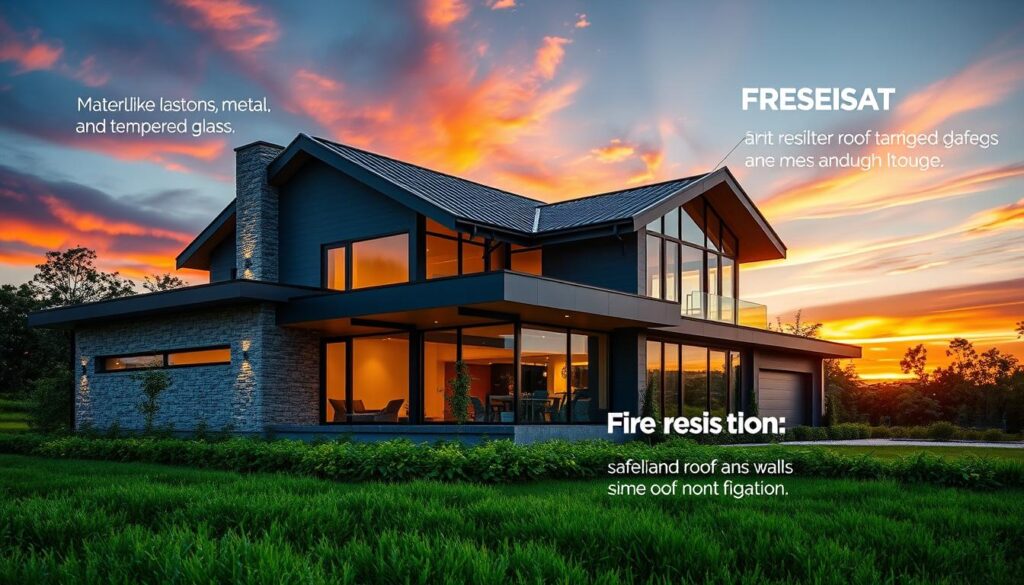
A good floor plan focuses on fire safety. It limits weak spots and makes escape easy. Many homes have designs with less overhang and smart openings. Every detail is crucial when fires threaten homes.
Planning the Floor Plan for Optimal Fire Safety
Building a fireproof home means making smart choices. Builders often use concrete or steel frames for safety. Careful window design helps block embers and ensures easy escape.
Setting Up Protective Barriers and Exterior Features
Use stone walls or gravel to keep flames away. Automation, like sprinklers on fences, adds security. This is important, as budget cuts can limit inspections.
Incorporating Flame-Resistant Finishes
Flame-retardant siding or coatings add defense. Regular checks are key, as funding can be a problem. A well-kept exterior helps stop sparks, showing the importance of constant care.
These numbers show the challenges for fire teams. This prompts homeowners to take strong protective steps.
| Impact | Statistics |
|---|---|
| Lives Claimed | At least 5 |
| Affected Acres | Over 25,000 |
| Structures Lost | Nearly 2,000 |
| LAFD Budget Cut | $17 Million |
Budget-Friendly Fireproofing Techniques
Many home renovation shows and community programs share ways to save money while making homes safer. They use recycled steel and cellulose as cost-effective options. News clips show how small changes can make a big difference in fire safety without spending a lot.
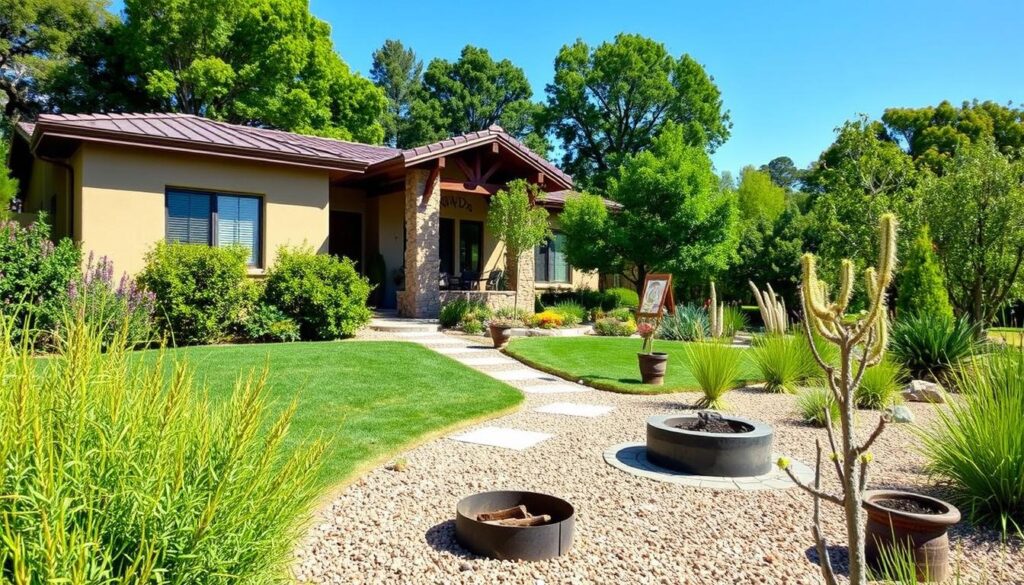
These homes use simple methods to fight fires. For example, mixing Borax with boiling water creates a DIY flame retardant. Tests show that treated items can stop burning and form a protective layer.
Cost-Effective Insulation Solutions
Cellulose insulation with retardants is a budget-friendly choice. It shows how to save money while improving fire safety. Its dense structure helps slow down fires by limiting oxygen.
Applying Fire-Retardant Coatings
Special coatings on wood surfaces make them less flammable. These coatings help materials smoke and stop burning on their own. This gives homeowners peace of mind in fire-prone areas.
| Material | Approx. Cost Range | Fire Rating |
|---|---|---|
| Metal Sheeting | $1.00 – $2.50 per sqft | Class A |
| Fiber Cement Siding | $5 – $13.50 per sqft | Class A or B |
| Fire-Retardant Treated Wood | +25% over untreated | Class B or C |
| Steel Garage Doors | $800 – $2,000 | Up to 90 minutes protection |
| Double-Pane Windows | From $200 | Extra ember defense |
Choosing the Right Fireproof Insulation
Fires can start in unexpected ways, like faulty wiring. Up to 70% of house fires come from electrical problems. This makes strong insulation very important.
Some products, like Rockwool and Owens Corning, can block heat even when it’s over 1,800°F. This protection can cut the risk of damage by almost half. It saves lives and property.
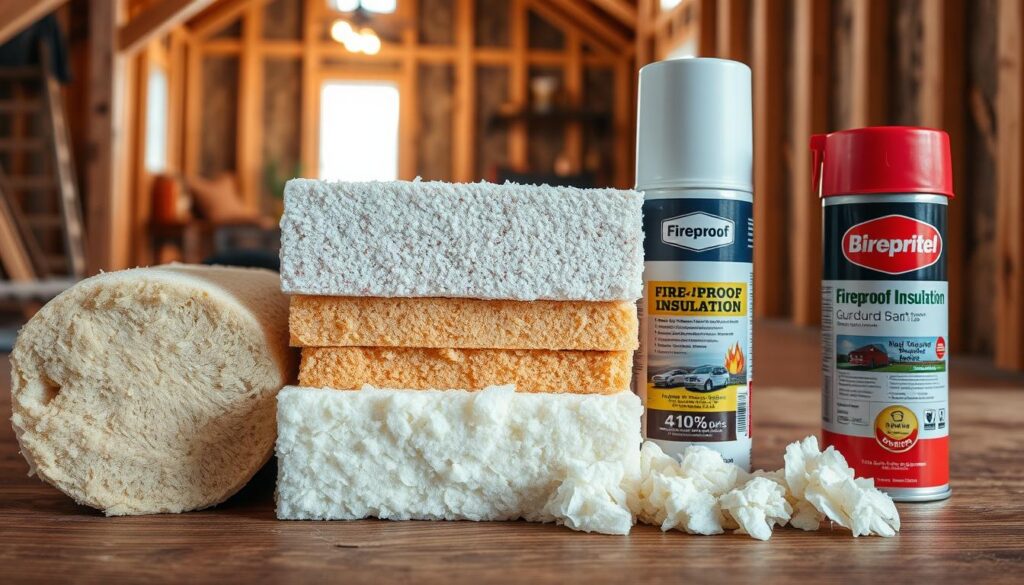
Looking for fire-resistant homes? Mix mineral wool, fiberglass, or rigid foam to protect against fires. New technologies make these options meet local codes and lower insurance costs by 15%.
Fireproof construction does more than just block heat. It follows safety guidelines that improve overall protection. The National Fire Protection Association says homes without proper measures are 2.5 times more likely to suffer damage.
Building a fire-resistant home is key in wildfire-prone areas like California. Only 20% of homes use the right materials. Yet, fire-rated insulation costs between $0.35 and $3.00 per square foot. It’s affordable for many budgets.
Choosing the right insulation can save lives. It’s a crucial step for homeowners wanting more peace of mind.
Recent wildfires in Los Angeles burned over 25,000 acres, forcing thousands to flee. Budget cuts have reduced brush clearance checks, leaving homes at risk. This shows why good insulation is a safety and financial must.
Buildings with flame-resistant materials have fewer toxic fumes and lower repair costs. The right choice ensures comfort in uncertain times.
Fire-Resistant Landscaping Tips
CNN has shown how yard design can either help or harm during fires. Fires in Australia and the Western US have highlighted this. It’s crucial to design your land to protect fireproof buildings.
Creating barriers outside is key to protecting homes from fires. Embers can start fires if they land near flammable materials. So, every part of your yard is important.

Creating a Vegetation-Free Safety Zone
Clear a five-foot area around your home. This reduces fire risks and helps protect your home. Use gravel or stone instead of mulch to stop embers from catching.
Zone 0 means no combustible items. This helps make buildings fire resistant and keeps sparks away.
Plant Selection for Low Flammability
Choose plants with moist leaves to resist fire longer. Water them well to avoid stress. Deciduous trees and native plants recover faster after heat exposure.
Their open branches help prevent fuel buildup. This is key for fire-resistant homes in dry areas. Keep dead foliage away from plants for extra protection.
Using Hardscaping to Your Advantage
Paving walkways or adding stone features stops flames from spreading. Patios and masonry walls act as firebreaks in hot areas. These choices merge landscaping with fire safety.
They show how creative yard designs can enhance safety beyond just building methods.
Ensuring Compliance with Building Codes for Fire Protection
Building codes change often due to new research on fireproof housing materials. Places prone to wildfires update rules to make homes safer. A well-designed fire resistant home design meets these new standards, making homes safer from roof to foundation.
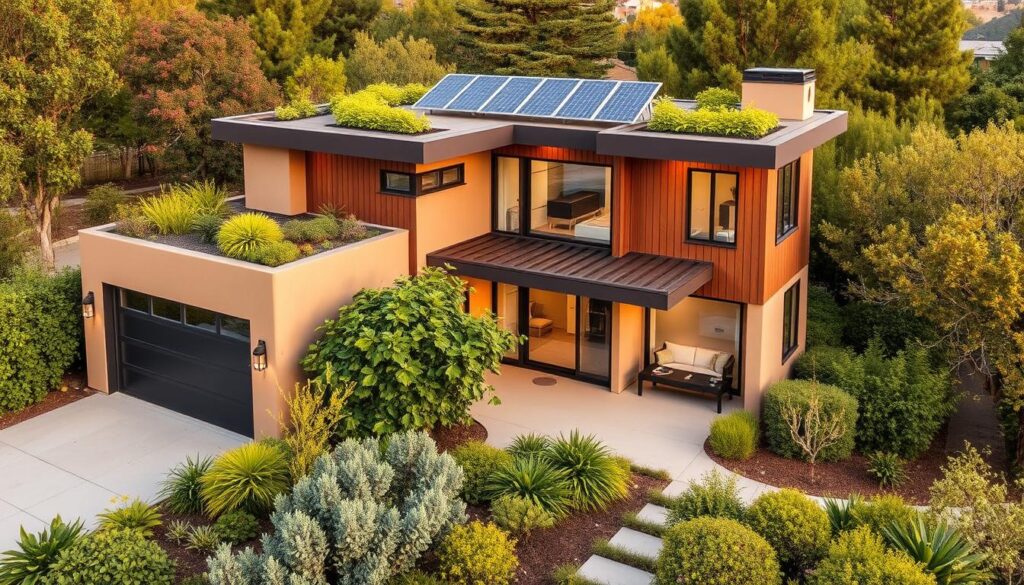
ICF walls can resist flames for up to four hours. This gives more time to evacuate in fire resistant houses. Inspectors check roofing, siding, and windows to ensure homes are strong against embers. Some areas even require Class A roofing, known for its high fire resistance.
Building a fire proof house design can meet local codes easily. Using ICFs might cost 1%–4% more, but it can save on repairs and insurance. Regular inspections help ensure homes are up to code, making them safer.
| Code Requirement | Key Benefit |
|---|---|
| ICF Walls | Up to four hours of fire resistance |
| Vent Screens | Helps prevent embers from entering |
| Class A Roofing | Highest safety rating against severe fire exposures |
Common Mistakes to Avoid When Building a Flame-Resistant Structure
The 2003 NIST-SFPE Workshop, backed by groups like AISC and UL, offered key insights. It highlighted the need for smart decisions in fireproof designs. Building a fireproof home on a budget requires careful planning to avoid common pitfalls.
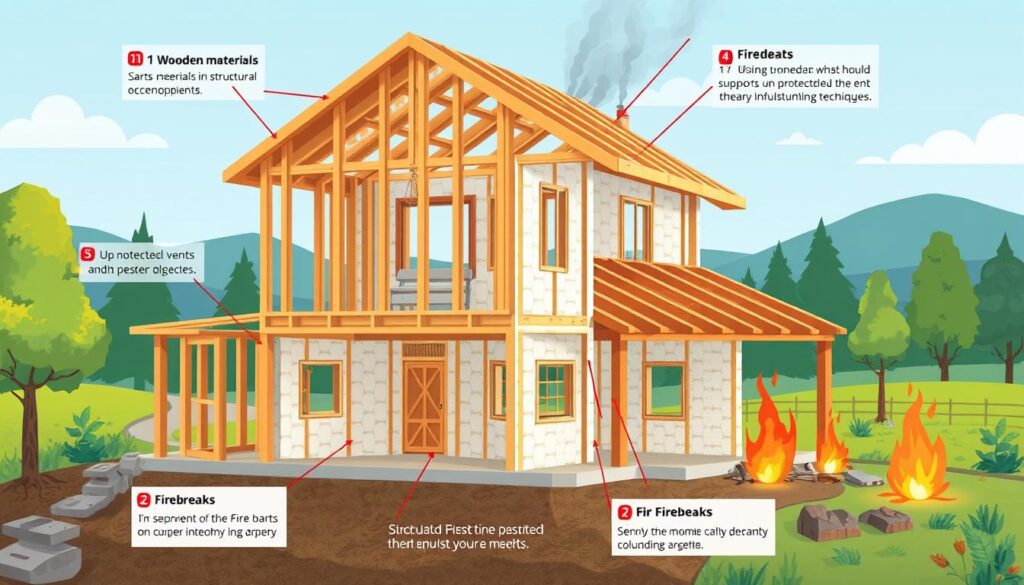
Experts stress the importance of using modern materials in fire-resistant construction. Even the toughest materials can fail if important safety steps are skipped.
Overlooking Ventilation Upgrades
Old vents can let sparks reach attics, starting fires. Upgrading vents and adding baffles is cheap and effective. These changes improve airflow and protect your home from embers.
Skipping Routine Fire Safety Inspections
Missing inspections can reveal hidden damage, like weak siding or gaps near windows. Regular checks help catch problems early. Experts, like those in the Fire Adapted Communities Learning Network, recommend regular inspections for safety.
| Common Oversight | Potential Risk |
|---|---|
| Inadequate Vent Upgrades | Higher chance of embers entering attic |
| Missed Safety Inspections | Hidden damage that weakens protection |
Long-Term Maintenance for a Fire-Safe Home
Keeping your home safe from fires is a daily task. Cleaning your yard is a big part of it. Leaves and branches on roofs and in gutters can catch fire easily. Regularly trimming and removing debris helps prevent fires.
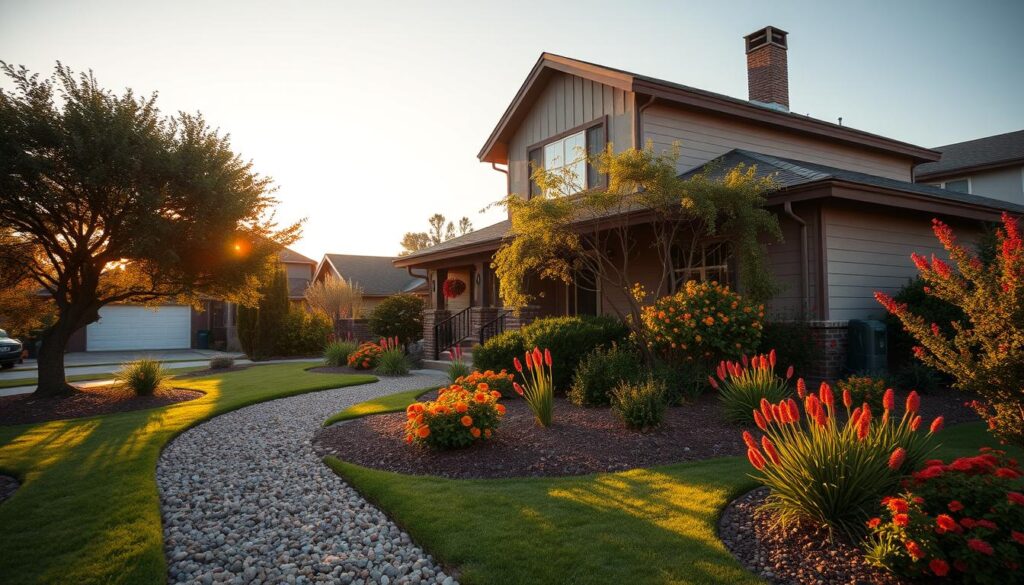
It’s not just about the yard. Inside your home, keeping things organized is key. A fire-safe home design means checking paint or sealants often. Flammable areas need fresh coats or fireproof insulation.
Roofs are very vulnerable. Replacing old shingles with fireproof ones is essential. Adding new flashing or reinforcing seams helps if sparks hit your roof. Many places see a 24% drop in fire injuries with fire-safe building codes.
- Clear gutters and rooftops on a consistent schedule
- Check insulation twice a year for any signs of damage
- Upgrade weak roof shingles to fireproof alternatives
| Key Statistic | Impact |
|---|---|
| Home fires | 70% of all U.S. fire-related deaths |
| Roof ignitions | Up to 75% lower risk with fireproof roofing materials |
| Insurance premiums | Potential 10-15% reduction with safety upgrades |
Innovative Fireproofing Solutions on the Market
New ideas in fireproof building techniques are changing how we protect our homes. Creative designs and stronger construction methods are lowering wildfire damage risks. Homes using modern systems are more likely to withstand flames and heat.
These strategies also help communities plan for safer growth. The SAM House prototype is a great example of this. It uses 12,000 psi concrete and can handle winds up to 200 mph. It has no materials that can spread flames and comes in modular panels that don’t need public utilities.
Here are some key points about the SAM House:
- Costs range from $400,000 to $1 million
- Projected to last around 200 years
- Intended for areas prone to hurricanes and wildfires
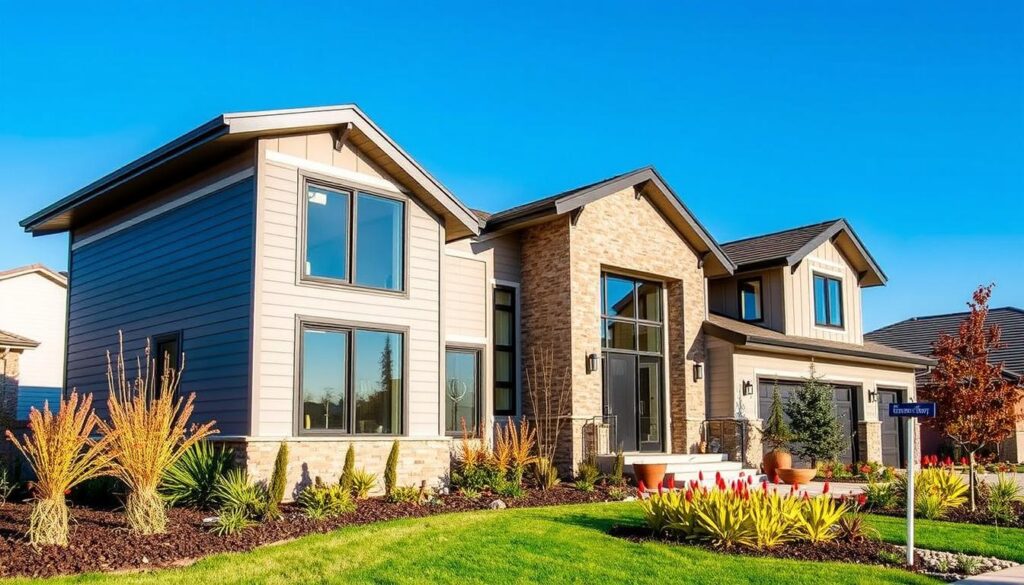
CLM Fireproofing states, “Passive fire systems should be integrated early to meet strict code requirements.”
These fire resistant materials are expanding our options for home fire safety. Homes made with dense concrete and updated siding have a better chance of staying safe. Builders are learning that every detail, from wall composition to landscaping, is crucial in preventing disasters.
Prefabricated Fire-Resistant Panels
Cutting-edge panels offer fire-resistant insulation that lowers labor costs. They come ready to install, combining lightweight parts with industrial-grade strength. Some models attach seamlessly to existing walls, making renovations easier in fire-prone areas.
Advanced Fireproof Coating Technologies
New coatings protect wood and other surfaces with barrier layers that slow flames. Many are environmentally friendly and work well with fireproof roofing to protect attics from stray embers. These fire safety measures target hidden gaps where heat and smoke could spread.
Enhancing Home Fire Safety Features
Across the United States, cities are updating their fire safety rules. They offer rewards for homes that go beyond the basics. This includes special labels and lower insurance costs. Sprinkler systems are also a big help, making it easier to fight fires when help is slow.
Experts say it’s key to protect your home inside and out. Kidde alarms and smoke detectors in bedrooms are crucial. Fireproof materials and products protect hidden areas like attics and closets. Using flame-resistant carpeting and drapes adds extra safety.
NFPA reports that a combination of sprinklers and alarms can significantly reduce fire-related fatalities.
Insurers give discounts for homes that take extra steps to be fire-safe. This includes installing sprinklers and choosing the right materials. Homes that update their systems can see big savings, showing they care about safety.
Regular checks on your detectors and sprinklers are a must. Keeping gutters clean and using mesh screens can prevent fires. Every step you take helps keep your home and loved ones safe.
Conclusion
Wildfires are a big worry in the United States. In Southern California, over 90% start from people. Santa Ana winds can blow up to 100 mph, making fires worse at night.
Choosing the right materials for your home is key to fire safety. A small spark can quickly spread. So, every detail is important.
Good fire-resistant design follows strict building codes. These codes are not just rules. They help make your home safe from fires.
Keep your home safe by trimming branches and clearing gutters. Also, make sure your home has good ventilation. Simple steps can keep you safe and worry-free.
Be careful when landscaping or renovating your home. Use fire-retardant materials to lower the risk of fires. Use local resources and have a plan to stay safe.

